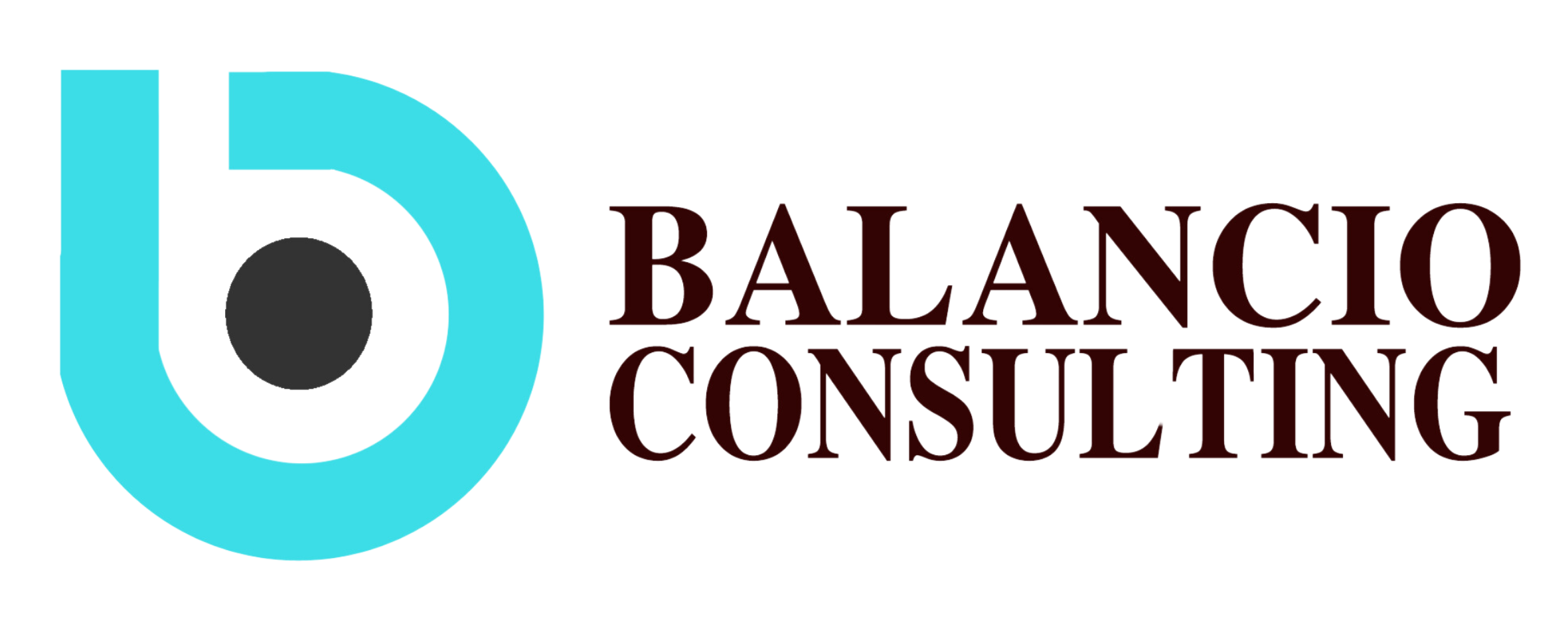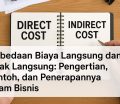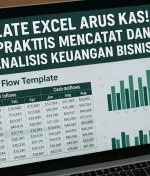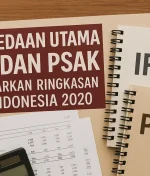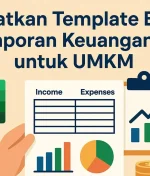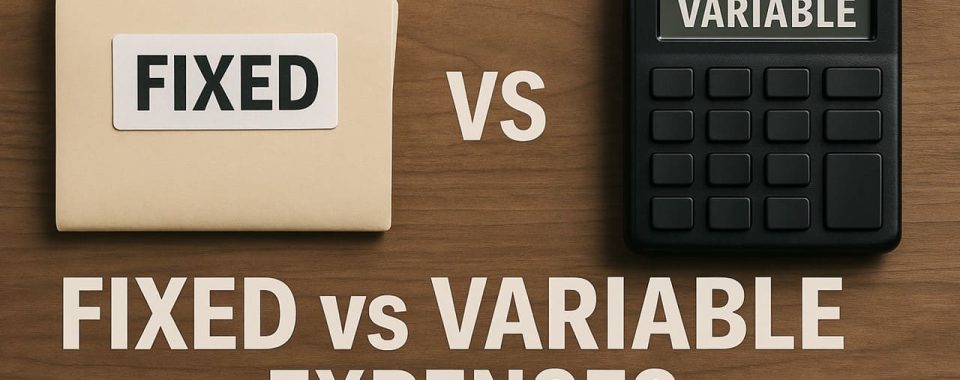
Running a successful business isn’t just about generating revenue it’s also about managing expenses effectively. Understanding how your costs behave as your business grows or shifts is crucial for making informed financial decisions. Whether you’re launching a startup or scaling an established company, knowing where your money goes and why can be the difference between profit and loss.
Two key concepts every business owner must grasp are fixed expenses and variable expenses. These categories define how different costs impact your operations, budgeting, and overall financial health. Fixed expenses remain constant regardless of business activity, while variable expenses fluctuate with your output or sales volume.
In this article, we’ll break down the difference between fixed and variable expenses, explore real-world examples, and show you how to manage both effectively to strengthen your bottom line. Whether you’re budgeting, forecasting, or optimizing cash flow, mastering these concepts is essential for financial clarity and business growth.
What Are Fixed Expenses?
Fixed expenses are business costs that remain constant regardless of production levels or sales volume. These are predictable, recurring expenses that don’t fluctuate with short-term changes in business activity, making them easier to plan and budget for. Whether your business is booming or experiencing a slow season, fixed expenses must be paid consistently.
Common Examples of Fixed Expenses:
- Office or retail space rent – Monthly lease payments that remain the same regardless of customer traffic or sales.
- Salaries of permanent employees – Fixed wages paid to full-time staff, unaffected by fluctuations in workload.
- Loan or mortgage payments – Scheduled repayments on borrowed capital, often with set interest rates.
- Business insurance premiums – Regular payments to protect the business against risks such as liability, property damage, or loss.
- Software subscriptions – Monthly or annual fees for essential tools like accounting software, CRM systems, or cloud services.
Impact on Cash Flow and Financial Planning
Fixed expenses play a significant role in your business’s break-even point the minimum amount of revenue needed to cover all costs. Because they are predictable, they form the backbone of any cash flow forecast and help business owners determine how much they need to earn just to stay afloat.
While fixed expenses offer stability, they also present financial risk if revenue drops. Unlike variable costs that can be scaled down, fixed costs must be paid no matter what. Therefore, maintaining a sustainable level of fixed expenses is key to long-term financial health and flexibility.
What Are Variable Expenses?
Variable expenses are costs that fluctuate based on the level of business activity. These expenses rise as production or sales increase and fall when business slows down. Unlike fixed expenses, variable expenses are directly tied to output, making them a crucial part of managing a scalable and responsive cost structure.
Common Examples of Variable Expenses:
- Raw materials – The more products you produce, the more materials you need.
- Sales commissions – Payments that increase as more sales are closed.
- Shipping and logistics – Costs that grow with the volume of goods sold or delivered.
- Marketing and advertising – Campaign costs that vary depending on how aggressively you’re promoting your business.
- Utilities linked to production – Electricity, water, or fuel costs that rise with increased operational activity.
How to Manage and Predict Variable Expenses
Managing variable expenses requires constant monitoring and flexible budgeting. Because these costs change with business performance, it’s important to track them in real time and adjust your strategies accordingly.
To keep variable expenses under control:
- Use historical data to forecast trends and set spending benchmarks.
- Implement cost-per-unit analysis to understand how expenses scale with production.
- Consider negotiating bulk discounts with suppliers or using performance-based marketing budgets.
- Leverage accounting software or expense tracking tools to stay on top of fluctuations.
By actively managing variable expenses, you can better align your spending with revenue and avoid overspending during low-revenue periods. It also empowers you to scale efficiently when business picks up.
Fixed vs. Variable Expenses, A Side-by-Side Comparison
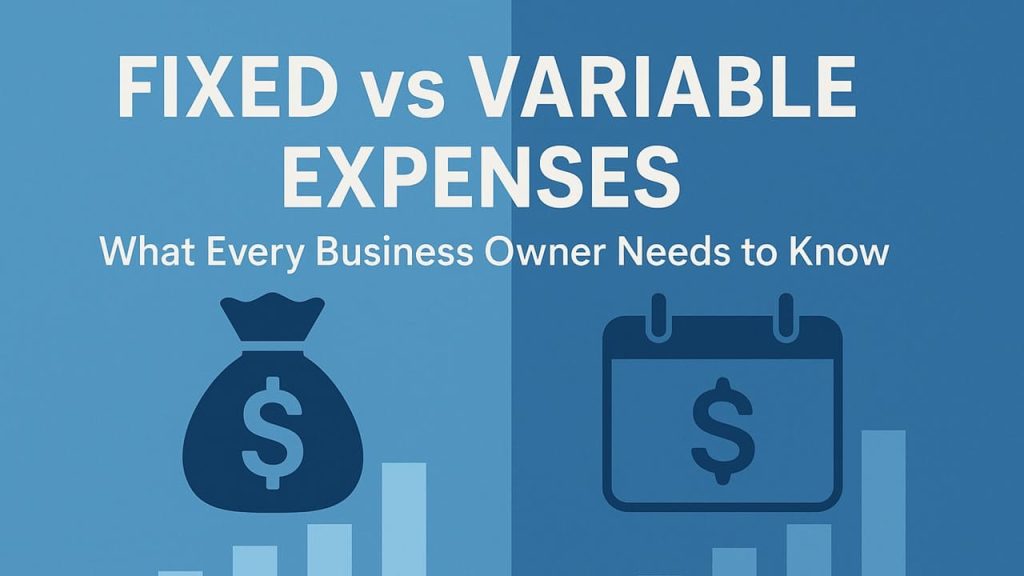
Understanding the differences between fixed and variable expenses is essential for making smart financial decisions. Both types of costs play unique roles in your business operations, and knowing when each matters most can help you improve budgeting, forecasting, and overall profitability.
Key Differences Between Fixed and Variable Expenses
| Aspect | Fixed Expenses | Variable Expenses |
| Definition | Costs that remain constant regardless of business activity | Costs that fluctuate based on business volume |
| Examples | Rent, salaries, insurance, loan payments | Raw materials, commissions, shipping, utilities |
| Payment Frequency | Regular and predictable | Varies with production/sales |
| Control Level | Less flexible in the short term | Easier to adjust based on business performance |
| Impact on Budgeting | Helps in long-term planning | Crucial for short-term cost management |
| Risk in Low Revenue | Higher risk—costs stay the same even when income drops | Lower risk—can be reduced during downturns |
When and Why Each Type of Expense Matters
- Fixed Expenses are important for stability and long-term planning. They help businesses predict their base level of expenses and make strategic decisions such as expanding office space or hiring full-time staff. However, they also create financial pressure during periods of low revenue because they must be paid regardless of performance.
- Variable Expenses offer flexibility and are vital for scaling operations efficiently. They allow businesses to adapt quickly to changes in demand, making them easier to control during slow seasons. That said, poor oversight of variable costs can lead to overspending during growth phases.
Balancing both types of expenses is critical. A well-managed mix ensures your business remains agile without sacrificing stability, especially during unpredictable market conditions.
Why Understanding Both Fixed and Variable Expenses Matters
Grasping the difference between fixed and variable expenses isn’t just accounting jargon it’s a powerful tool that helps business owners make smarter, more strategic decisions. When you understand how your costs behave, you’re better equipped to build a realistic budget, assess your profitability, and navigate financial uncertainty with confidence.
1. Accurate Budget Planning
Knowing which expenses are fixed and which are variable enables you to create a reliable and flexible budget. Fixed costs provide a stable foundation for monthly and annual planning, while variable costs help you anticipate how spending may change as your business scales. This distinction ensures that your budget reflects reality and prepares you for both slow and high-growth periods.
2. Break-Even Analysis
One of the most important tools in financial planning is the break-even analysis a method that determines how much revenue you need to cover all your costs. Because this analysis relies heavily on separating fixed and variable costs, understanding each type is crucial. The clearer your grasp on these expenses, the more accurately you can:
- Set pricing strategies,
- Forecast revenue targets,
- And identify when your business will become profitable.
3. Cost Control and Profitability
When you’re able to distinguish between fixed and variable expenses, you gain more control over your cost structure. For example:
- During a downturn, you can trim variable expenses to preserve cash flow.
- During a growth phase, you can evaluate whether increasing fixed expenses (like hiring or expanding) makes strategic sense.
Ultimately, this insight allows you to optimize spending, reduce waste, and maximize profit margins a key advantage in any competitive market.
Strategies for Managing Fixed and Variable Expenses
Managing your expenses effectively is essential to maintaining financial health and boosting profitability. Whether fixed or variable, each type of expense requires a different approach. With the right strategies and tools, business owners can gain greater control, reduce unnecessary spending, and make smarter financial decisions.
Practical Tips for Managing Fixed Expenses
1. Review Fixed Costs Regularly
Fixed expenses may seem unchangeable, but they shouldn’t be ignored. Periodically reassess your rent, subscriptions, insurance policies, and long-term contracts to identify opportunities for renegotiation or reduction.
2. Avoid Unnecessary Long-Term Commitments
Before locking into multi-year agreements, consider the impact on your flexibility. If you’re in a growth or testing phase, opt for shorter terms or scalable plans.
3. Bundle or Consolidate Services
Look for providers that offer package deals or allow you to combine services (e.g., internet and phone) to reduce total costs.
Practical Tips for Managing Variable Expenses
1. Track Variable Costs in Real-Time
Use expense tracking tools to monitor fluctuations and spot trends. This helps avoid unexpected spikes and enables better forecasting.
2. Set Spending Thresholds
Establish budget caps for categories like marketing or materials, especially during slow seasons or economic uncertainty.
3. Use Performance-Based Spending
Tie variable spending (like advertising) to ROI or sales targets to ensure every dollar spent contributes to growth.
Leveraging Technology to Optimize Expense Management
Modern businesses have access to a range of digital tools and platforms that simplify the tracking, categorization, and analysis of expenses. Here are a few to consider:
- Accounting software (e.g., QuickBooks, Xero) for automatic expense categorization and reporting.
- Budgeting tools like PlanGuru or Float for forecasting and cash flow projections.
- Expense tracking apps such as Expensify or Ramp to monitor both fixed and variable expenses in real time.
- KPI dashboards to visualize spending patterns and financial performance at a glance.
By leveraging technology, you not only save time but also gain valuable insights into how your money is being used—insights that drive better decision-making and long-term success.
Conclusion
Understanding the distinction between fixed and variable expenses is fundamental for any business owner aiming to achieve financial stability and growth. Fixed expenses provide a predictable foundation for budgeting, while variable expenses offer flexibility to adapt to changing business conditions. By effectively managing both, you can enhance your budgeting accuracy, perform insightful break-even analyses, and implement robust cost-control measures.
However, navigating the complexities of expense management can be challenging. That’s where professional guidance becomes invaluable. At PT Balancio Konsultasi Indonesia, we specialize in empowering Indonesian MSMEs with tailored financial solutions. Our services include:
- Bookkeeping Services: Ensuring accurate financial records, tax compliance, comprehensive financial reporting, and efficient payroll processing.
- Implementation System: Providing ERP system implementation, business intelligence solutions, and technology consulting to streamline operations.
- FP&A Services: Offering financial forecasting, budgeting, performance analysis, and cost-benefit analysis to support strategic decision-making.
- Additional Services: Delivering business advisory and financial modelling to simulate various scenarios and evaluate potential outcomes.
Partner with us to optimize your operations, improve financial performance, and scale your MSME for sustainable success. Visit our Services page to learn more about how we can assist you.
